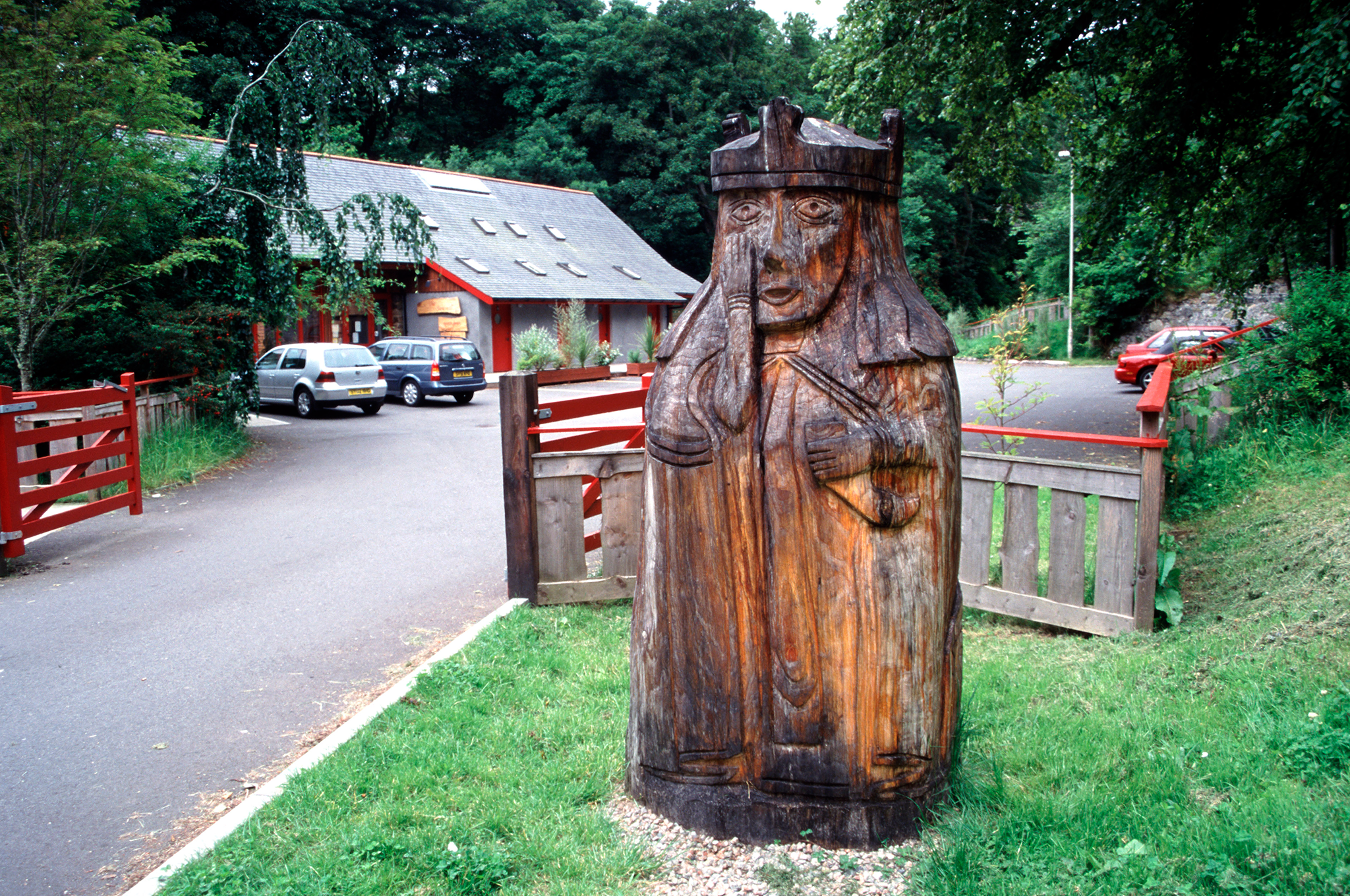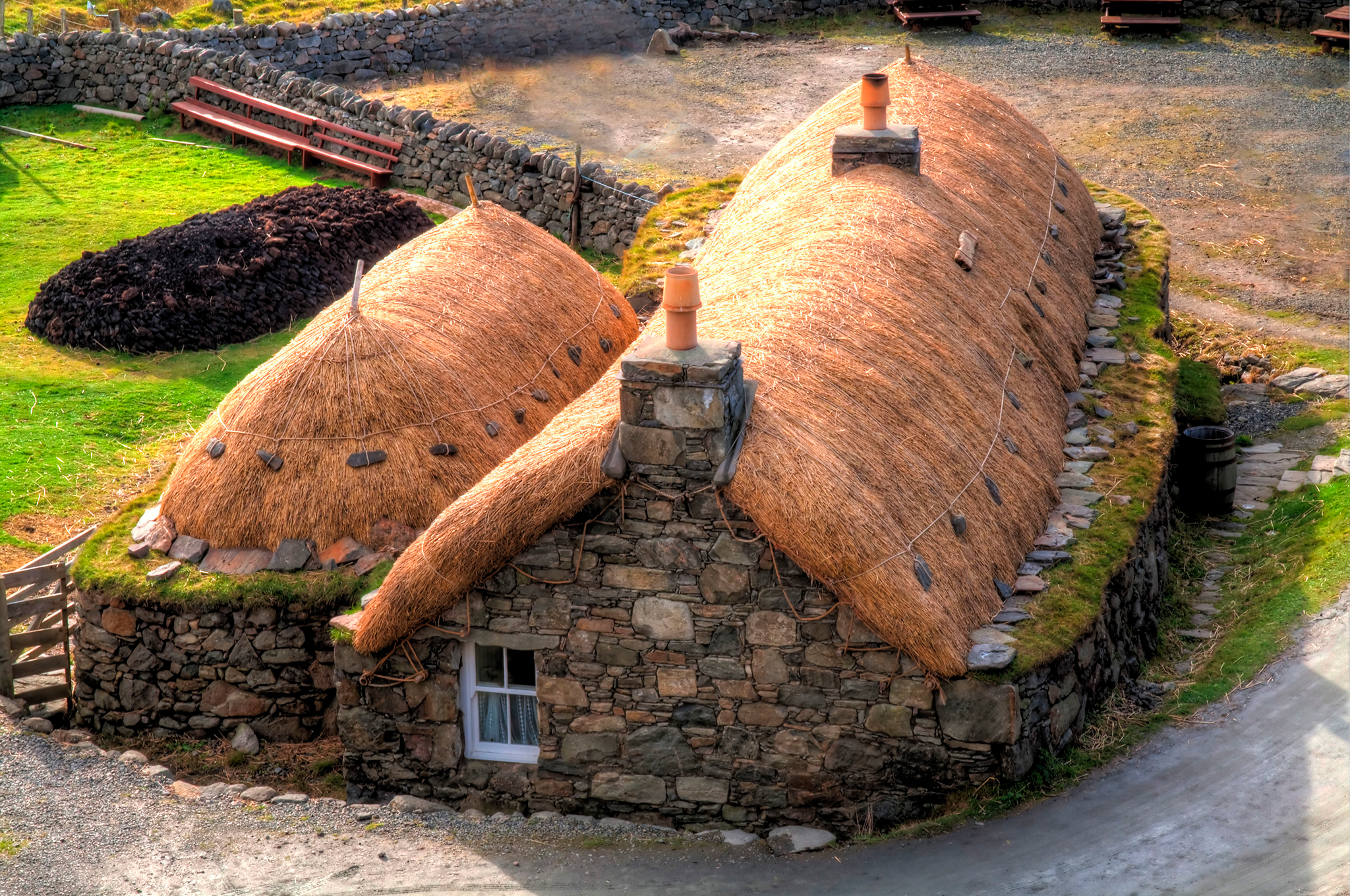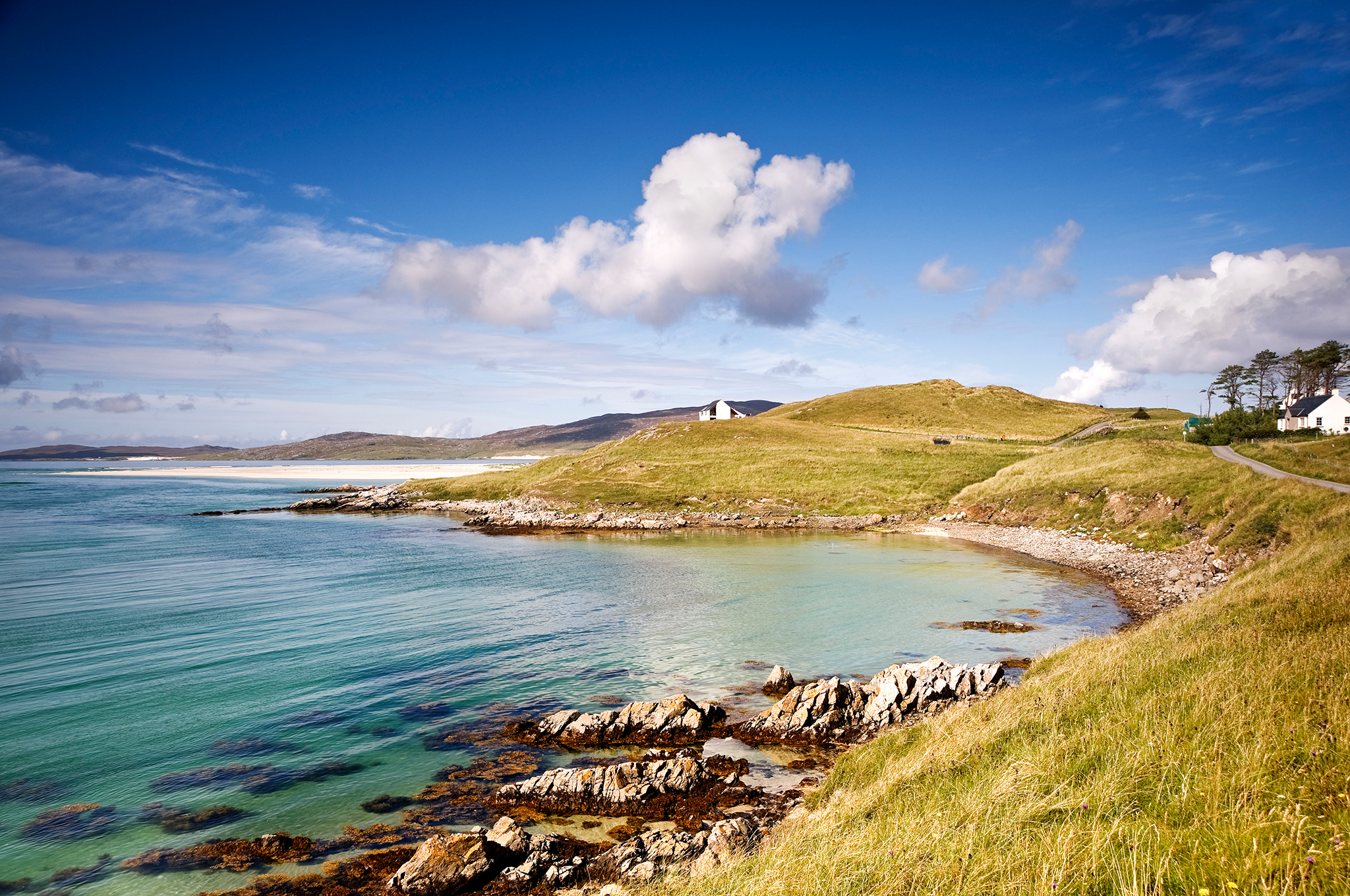Journey to the edge of Britain: Lewis and Harris island
As the Scottish referendum approaches, Jonathan Lorie travels to the largest and furthest-flung Hebridean island

In the darkness of the island’s theatre, a spotlight shines on the golden curls of Mischa MacPherson. She steps up to the mic and keens a Gaelic lament, backed by the wild notes of a Celtic whistle.
Her voice is soft as rain, swooping as a seabird, rooted in the traditions of the Hebrides. When she stops, the audience rise to their feet in a breaking wave of fierce applause.
The Mischa Macpherson Trio have come to Stornoway for the Hebridean Celtic Festival, an annual gathering of the music and people of the Outer Hebrides. And I have come too, in this year of Scotland’s independence referendum, to enter the Gaelic world of the largest island: Lewis and Harris, a single landmass adrift in the North Atlantic, the very edge of Britishness.
“This is the loveliest island in the world,” says Mischa over a coffee after her show. She’s only 20 but has already won the Radio 2 Young Folk Award and studied music in Helsinki. “I’m so thankful I was brought up here. You feel so close to nature and wildlife – it’s stunningly beautiful. You could be 80 and living here and you’d still appreciate it.”
Stornoway is the island’s tiny capital and next morning I wander its granite streets, past the harbour lined with fishermen in yellow oilskins, heaving nets and chatting in Gaelic. Somewhere a bagpipe plays. Between chippies and craftshops, I spot the “Yes” campaign office and wander in. I’m buttonholed by Ian Martin, who tells me about the Highland clearances and the Battle of Culloden. “I’m not against the English,” he warns, “but we don’t need Westminster. I’d rather have Brussels. We want to make our own decisions. We want Scotland to be part of the global village.”
Next door, I find a place to try another kind of local identity – the food. Digby Chick is the best restaurant on the island, its tables crammed with noisy local families. I order a fabulous starter of smoked mackerel mousse with earthy cubes of beetroot, then a platter of locally caught seafood – scallops, salmon, herring and hake. Washed down with a glass of chablis, it’s a sparkling introduction to the pleasures of island life.
Further pleasures await down the street, in a contemporary tweed shop called By Rosie. Harris Tweed is enjoying a fashion moment, turning up on everything from Dr Martens boots and Nike trainers to Chanel jackets (Vivienne Westwood has long been a fan). And Rosie Wiscombe, in her elegant workshop, makes it into the prettiest purses, handbags and even hoodies.

“Tweed is great to work with, it’s got such personality,” she smiles. “Look at this piece, it’s a riot of pinks and greens and blues. And I’m inspired by the landscape. One of my colour schemes has greys and blues for Stornoway harbour. Another is called Beach, for the sea, the sand and the orange flowers.”
Looking for some sea and sand, I drive out of Stornoway, west across Lewis. The road crosses vast bogs where peat is being cut for fuel, reminding me of the peat-bog burials of Ireland and Denmark, where ancient people believed these waterlands were a meeting point of Heaven and Earth. Perhaps they were right.
Then the road becomes a single lane twisting among lochs and hills to a wild shore. This is where Britain ends. I park at the sweeping sands of Uig beach, the loveliest on Lewis. Here, in 1831, a crofter found the Lewis Chessmen – 78 pieces carved from walrus tusks by Norsemen.
Along the bay is the islands’ only distillery, Abhainn Dearg. It’s a clutter of sheds beside the Red River, so-called because it once ran red with blood in a skirmish with Viking invaders – an earlier independence struggle.
Joni MacDonald shows me the still room and pours a dram of whisky. It tastes a little young but has the smoke and singe of the real thing. Joni sighs. “I was brought up in the next village. It was good, we were free, we had the luxury of the hills and the sea. I went away to the mainland for 30 years to work as a nurse. But now I’m back.”
I drive along the ragged coast to Gearrannan for the night. Here, an abandoned village of traditional blackhouses has been restored as holiday lets. They look like Hobbit homes, half-sunk into the ground to escape the winter gales, their thatch held down by ropes. One is kept as it was in the 1950s.
There’s peat in the hearth, a bed in the living room and a Bible on the shelf. A family tree on the wall dates back to Donald Macleod of 1775: that’s 30 years after the Battle of Culloden. The last villagers left in 1974, but at the top of the lane I meet a man whose mother was born here. “I remember visiting the last two old ladies who lived here,” he says. “In the end they were happy to go. There was no running water, no sanitation, no one left. It was time to leave.”
Next morning, in search of living heritage, I visit a tweed maker in the village of Carloway. Norman Mackenzie is a grey-haired man who learnt the craft as a boy by watching his uncle in the weaving shed where we meet today. He sits at a Hattersley loom from the 1950s and clatters it into life by pedalling.
As the shuttle whizzes, he explains how the fabric has to be spun, dyed and woven entirely by hand, in cottages on the islands, to receive its coveted label. “The biggest buyers are Japanese. They like that it’s a hand-woven fabric made for hundreds of years on the edge of the world, a quality product with all this history.”
There’s more history down the road at Callanish, where the grandest prehistoric site in Scotland is a rival to Stonehenge. High on a hill, above a lake ringed by sacred sites, Iron Age farmers built a magnificent stone circle 5,000 years ago. It’s guarded by a line of granite slabs twice the height of a man and twisted by the wind.
At its centre broods a 20ft monolith, like an old man from another time. Beneath it is a pit where human bones were found. I step down into the hollow and look back up. I see sky and stones, the ancient silhouettes encircling me with their stillness and strength. In the distance I glimpse a mountain range the locals call Cailleach na Mointeach, the Old Woman of the Moors, because it looks like a woman lying asleep. She is perhaps a memory of the cult of Mother Earth.
It’s time to go deeper into the Hebrides. I turn the car south and head for Harris, the wilder land below Lewis. Mountains surge around the road. A stag with massive antlers leaps away. Eriskay ponies graze the moor, tiny as the Viking ponies of Iceland. Then the road curves round a glittering sea-loch and into Tarbert, the hamlet where I will stay tonight.
Astonishingly, beside the empty harbour and sleepy houses I find the Hotel Hebrides, a boutique place whose bar and restaurant are crowded with locals and tourists. It’s a tiny outpost of contemporary style, the bedrooms form a sumptuous picture of charcoal walls and satin fabrics.
I settle into its restaurant and attack a bowl of seafood chowder, rich with the briny, earthy, metallic tang of mussels, scallops and langoustines, like a bucket of the sea itself. I finish off with a single malt, whose honeyed smoke wafts me up to a silky bed.
My last day on the island is a long and elemental journey to the southern tip of Harris, over high moorland to a plunging road between mountains and sea. The colours are indeed those of the tweed – purple heather, granite hills, copper beaches, pewter skyline. The waters shift from jade to sapphire to amethyst.
At Luskentyre, I walk on a beach that may be the finest in Britain, a vast stretch of sand and shallows where light and wind dance across high dunes and seabirds soar. At Scarista, I find a single standing stone among wildflowers by the sea, watching over a world it has known for thousands of years.

I end my journey at Rodel, the southern point of Harris, where a medieval church tower offers astounding views of islands running further south, layer after layer, fading into the silver horizon. From here the Hebrides stretch for another 100 miles, smaller and remoter, linked to the outer world by ferries. At their southern tip, the people speak Gaelic as a mother tongue and are Catholics, because the Protestant Reformation never reached there.
But the Vikings did – and the ancient Irish and modern Europe – and I realise that these islands belong to a northern world with different allegiances and stories to those I know in England. They reach seawards in layers of place and time, history and people, and outwards in their hopes for the future.
No wonder they are debating whether finally to go their own way this September.
Getting there
Jonathan Lorie travelled with Visit Scotland (visitscotland.com). He flew with Flybe (0871 700 2000; flybe.com), which serves Stornoway from Edinburgh, Glasgow and Inverness. Eastern Airways (0870 366 9100; easternairways.com) flies from Aberdeen.
You can also reach Lewis and Harris on Caledonian MacBrayne ferries (0800 066 5000; calmac.co.uk): from Ullapool to Stornoway or from Uig (Skye) to Tarbert.
Staying there
Gearrannan Blackhouse Village on Lewis (01851 643416; gearrannan .com) has houses from £50 per night for two people and a hostel from £15pp per night. Hotel Hebrides on Harris (01859 502364; hotel-hebrides .com) has double rooms from £130.
Visting there
Digby Chick Restaurant, Stornoway (01851 700026; digbychick.co.uk); lunch menu £13.50.
By Rosie (01851 701622; byrosie.co.uk).
Norman Mackenzie at Carloway Harris Tweeds (01851 643413).
More information
visitouterhebrides.co.uk.
The Hebridean Celtic Festival takes place in July (hebceltfest.com) and Hebtember is in September (hebtember.co.uk).
Join our commenting forum
Join thought-provoking conversations, follow other Independent readers and see their replies
Comments